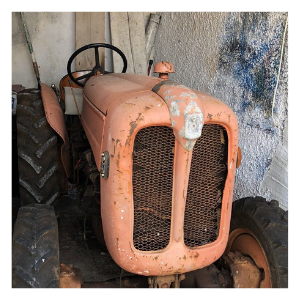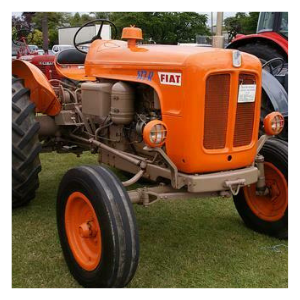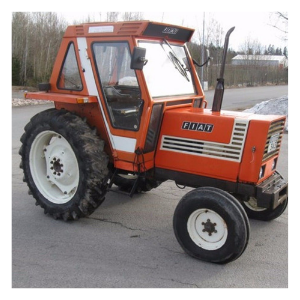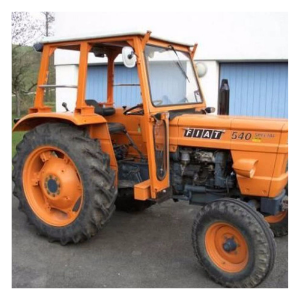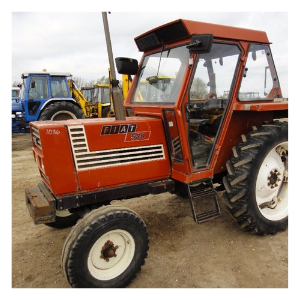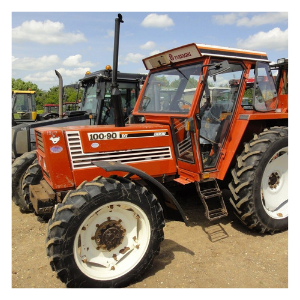
FIAT TRACTORS - A HISTORY
Fiat was founded in 1899 as an automobile manufacturing company. Fabbrica Italiana di Automobili Torino (FIAT) began developing tractors by 1910, but was delayed by World War I. Fiat Trattori S.P.A. was a Fiat group company founded in 1919. The Fiat 702 was one of the earliest models in production and the first Italian tractor to be built on an industrial scale. The 702 was followed by the 702A, the 703B and 703BN.
1932 saw the launch of the Fiat 700C, followed by the lighter 702C with 28 HP instead of 35. Fiat also produced the Fiat 700C crawler tractor, offering impressive traction capacity attributed to the tracks which prevented it from sinking into wet ground.
By 1939 Fiat launched its first mass production tractor the Fiat 40 Boghetto; the first tractor with the ability to operate on a variety of fuels.
The Fiat 50 crawler tractor was produced after the Second World War. Followed by the Fiat 600 and the innovative crawler Fiat 601 featuring levers instead of a steering wheel. In 1951 the Fiat 25R was launched onto the European agricultural market produced in a large number of models, The next year saw the launch of the high-power OM tractors including the popular OM 35-40 model. In 1957 Fiat launched the biggest selling tractor of the 1950s, the “little” FIAT 18. Followed by the launch of the Fiat 411.
The Series 200 was introduced in 1959 including the 211 R model; ideal for work on small fields, with a gearbox offering 6 forward and 2 reverse speeds, a top speed of 20 km/h and total weight of just 900 kg.
The Diamante series followed including the 215, 315, 415 and 615 models, and were the first tractors to have synchronised speeds, differential lock and the AMPLICUPLE device.
By 1968 the 250, 450 and 550, as well as the 650 and 850 models were launched. They were followed by models 1000 and 1300 targeted to the European market. Buy spare parts for your Fiat here>
At the beginning of the 1970s the range underwent a change, the special 350 was launched and the 480 and 500 models replaced the 450 model, then becoming the 540 Special. Also in the 1970s the 850 became the FIAT 850 super, with an increase in power to 95 HP, the 1000 increased to 110 HP; and the super 1300 increased to 150 HP.
By the middle of the 1970s the Fiat 80 series was launched with the models 580, 680, 780, 880, 880\5, 980, Fiat 1180, 1280, 1380, 1580 and the top-of-the-range Fiat 1880. These tractors were the first in the world to have a platform mounted cab styled as one with the tractor
From 1979 to 1983 Fiat began the production of high-power tractors; the Fiat-Versatile 44 Series: 44-23, 44-28, 44-33, 44-35 of 230, 280, 330 and 350HP. In 1982 Fiat launched the new 66 Series with models known as the “daily” tractors,
because they were able to perform any everyday tasks on small scale farms.
In 1984 Fiatagri launched its historic 90 SERIES, which replaced the 80 series with a large number of models: medium-low (55-90, 60-90, 65-90, 70-90, 80-90, 85-90 Turbo) and high powered (115-90, 130-90 Turbo, 140-90 Turbo, 160-90 Turbo, 180-90
Turbo. Since 1985 the company had also been producing the 90 series, known as the “bridge” series, with the 90-90, 100-90 and 110-90 models.
In 1990s the Fiat launched the “Winner series; the F100, F110, F120 and F130 Turbo. 1993 saw the introduction of the second series, comprising the F100 and F115 and the two Turbo models, the F130 and F140. In 1992 the 75 series crawler tractors received an upgrade called the "Steering-o-matic", a joystick instead of the steering clutches. The Winner series was followed by the launch of the “G” models designed for large fields and large tilling applications and the M Series, with the M100, 115, 135 and 160 models.
